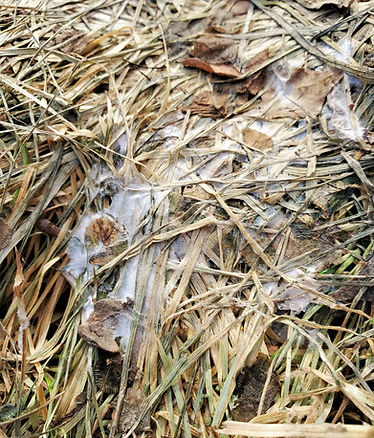NJ Tree and Lawn Care Services by Plant Solutions:

Lawn Disease Treatment Services in NJ
Of all the pests that damage your beautiful landscape lawn disease is one of the most difficult to tame. There are hundreds of fungus that can infect your turf. Some are relatively harmless, others can destroy an entire lawn in a very short time. Lawn Disease occurs when the lawn or root structure becomes affected by fungus pathogens which cause deterioration to the grass plant. Plant Solutions can help you identify and treat all cases of lawn disease and make sure you have the perfect lawn all season long. Call us for a free estimate or schedule your appointment online.
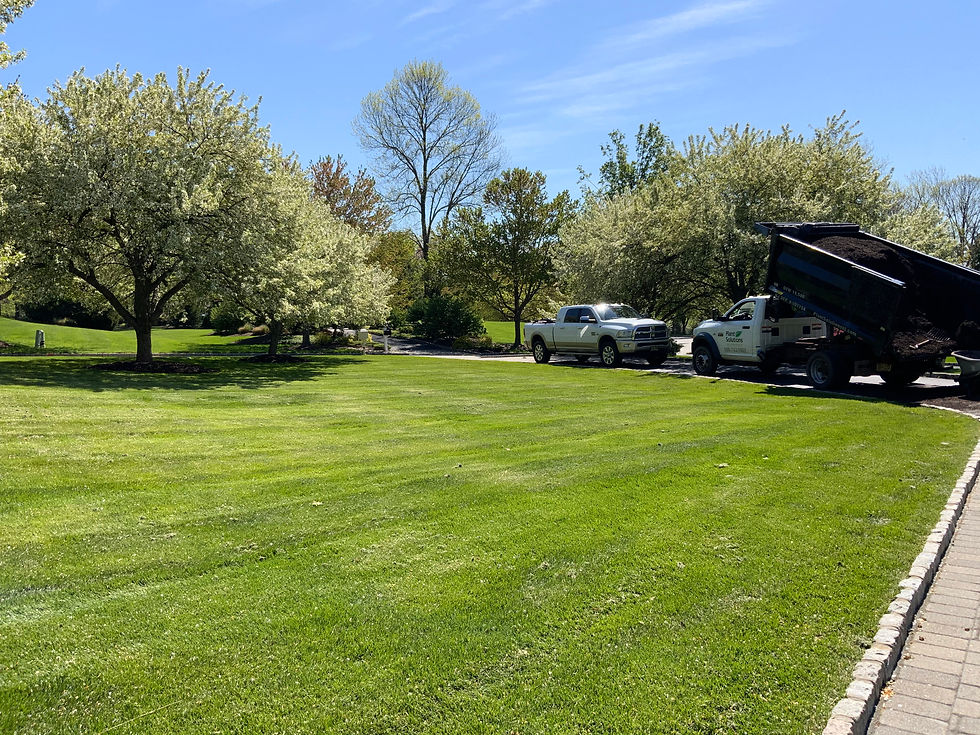
Frequently asked questions (FAQs) about lawn disease treatments in New Jersey

How can I identify a lawn disease?
Many lawn diseases have similar symptoms and can be tricky to identify depending on the severity and stage of the problem. Read through each of our disease guides below to help you identify which one your lawn is suffering with. However, it may be that professional analysis may be required.

How does lawn disease spread?
Fungus spores spread on the wheels of lawn mowers, shoes of children, on the droplets of rain that bounce from plant to plant during rain or watering, and can even blow like microscopic seeds across your lawn. Every lawn has disease organisms. The trick is not letting them get the upper hand.

How can I prevent lawn disease?
To reduce disease, keep the lawn healthy and growing with proper feeding, mowing, watering, and thatch control measures. Some grass types are much less susceptible to fungus attacks. Consider planting disease-resistant varieties when you seed.

How is lawn disease treated?
Disease treatments do not usually eliminate the disease from the lawn. Instead, they suppress activity for a period of a few days to several weeks. The goal is to keep the disease in check long enough for the grass to recover or the weather conditions to change. Often, several treatments are needed.

What lawn diseases are common in New Jersey?
Some of the more common diseases facing residents of tri-state area include; snow mold, rust, dollar spot and red thread. Most of the common diseases are weather-related. Some of them require control and some don’t – most of them can be handled through good cultural practices.

How effective are fungicide treatments?
There is no permanent cure for lawn diseases, but some can be controlled or prevented by modern fungicides. In most lawn environments, good horticultural practices can prevent severe fungal attack or long-term problems. Making sure there is sufficient light and airflow across the lawn, reducing thatch levels and reducing compaction will all increase the overall health of the lawn and reduce the risk of diseases developing. Sports turf and intensively managed grass areas may require a regular fungicide programmed to prevent disease outbreak. However, considering that many of these diseases will grow out, and given the difficulty of being able to control the environmental conditions that encourage disease flare ups, we wouldn’t advise immediately reaching for chemical treatments and instead look at any lawn issues that can be addressed instead.

How to repair a lawn following disease outbreak?
Some lawn diseases only affect the crown and blade of the grass, with the root zone remaining intact. This often means the lawn can recover well given the right conditions and a little TLC.
-
Rake out any dead or damaged areas using a rake or scarifier
-
Core aerate over these areas to a depth of 3-4 inches to relive compaction
-
Apply appropriate lawn seed at the recommended rate
-
Spread over a thin layer of top dressing to protect the seed
-
Keep watered until the seed has germinated
Common lawn diseases in New Jersey and how to spot them
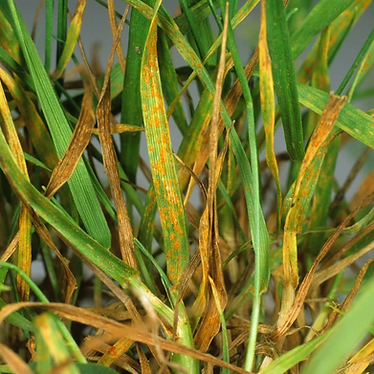
Rust
Fungus: Puccinia
Symptoms: Thin, weakened turf that appears covered with an orange-red or yellow powdery dust. Powder will discolor shoes and clothing.
Grasses susceptible: All cool season turfgrasses, especially perennial ryegrass.
Conditions favoring disease: Warm nights (68-86 degrees F/ 20-30 degrees C), wet leaves, and low light areas (shady sites or cloudy weather).
Most severe mid to late summer into fall when turf is not actively growing or under stress.
Cultural options: Maintain adequate fertility, Minimize leaf wetness, Avoid drought stress (proper watering).
Dollar Spot
Fungus: Sclerotinia homoeocarpa
Symptoms: On closely mowed turf: Collection of silver dollar size, tannish brown to whitish spots. Turf appears speckled or mottled. On residential turf: Collection of 1 inch to 6 inch diameter bleached white patches.
Grasses susceptible: All cool season turfgrasses.
Conditions favoring disease:
Warm days (60-90 degrees F/ 16-32 degrees C) and cool nights above (50 degrees F/ 10 degrees C). Prolonged leaf wetness, dew, and high humidity.
Dry soils with low nitrogen fertility.
Cultural options:
Maintain adequate fertility, Reduce compaction and limit thatch, Minimize leaf wetness, Avoid drought stress (proper watering).
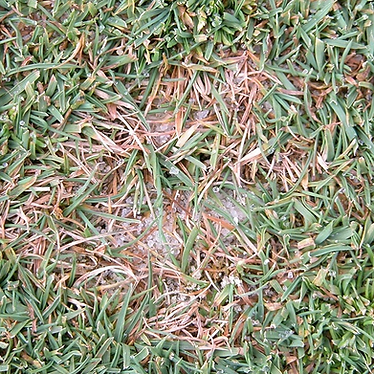
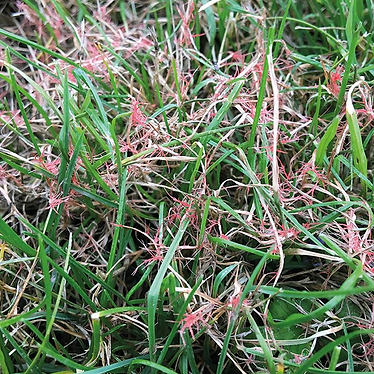
Red Thread / Pink Patch
Fungus: Corticium fuciforme
Symptoms: Coral-pink to red fungus strands may be seen on leaves and leaf sheaths binding leaves together. Affected turf areas are usually more or less circular and vary from 2 to 15 inches in diameter. When dry, the pink strands resemble red threads. The infected leaf first appears water-soaked, but rapidly dies, becoming light tan. Leaves, and often the sheaths, are killed.
Grasses susceptible: Bentgrass, bermudagrass, bluegrass, fescue and ryegrass.
Conditions favoring disease: Red thread is most serious during periods of prolonged cool, wet weather, especially on turf deficient in nitrogen.
How fungus survives:
The fungus survives unfavorable conditions as pinkish or red gelatinous crusts of fungus threads. When conditions are favorable, the crusts resume growth and fungus threads infect leaves.
Gray Snow Mold
Fungus: Gray Snow Mold (Typhula spp)
Symptoms: Where snow mold has been active, the turf commonly develops rough circular spots of matted, silver-gray turf. Often these spots are so numerous that an entire area may be disfigured.
Grasses susceptible: Kentucky and annual blue grasses, fescues, bent grasses, rye grasses, Bermuda grass, and Zoysia grasses.
Conditions favoring disease: Snow covers or prolonged periods of cool, wet weather. The optimum temperatures are in the 32 to 45 degrees F. Could develop rapidly when snow has fallen on unfrozen ground.
Cultural options: Loosen the discolored, matted grass with a leaf rake (without digging into the soil), fertilize the entire lawn and see what will develop once good growing weather is at hand.
